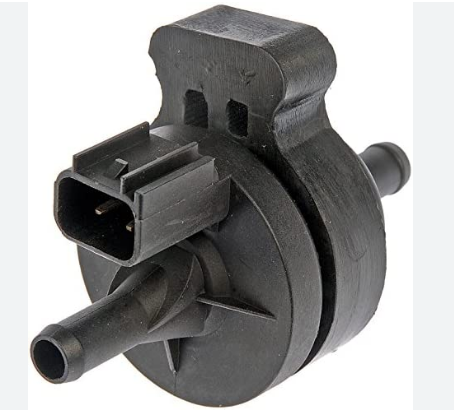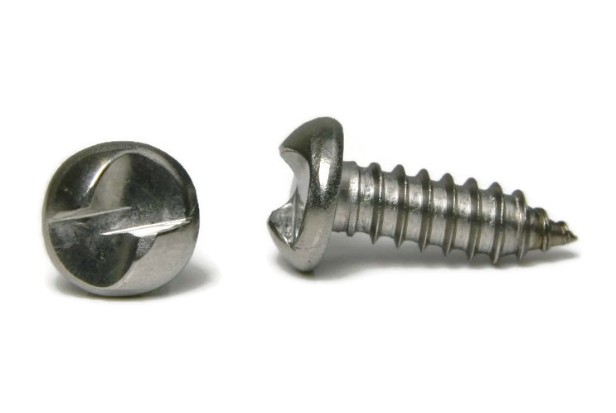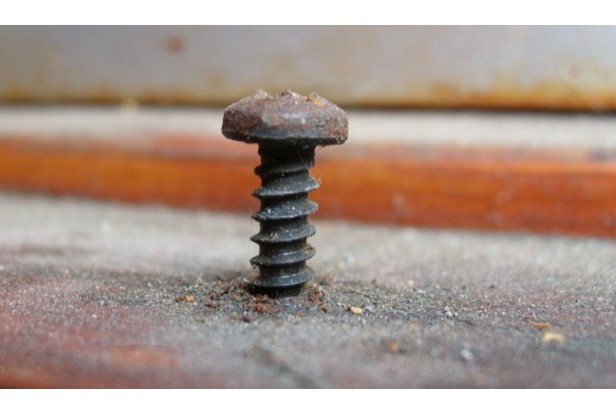
Depending on your level of technical expertise, there are two ways to clean a purge solenoid valve. Most people should be able to accomplish this by simply rinsing the internal parts without opening them, as our primary goal is to remove the dirt that prevents them from functioning properly.
- Locate the purge solenoid valve
- Mass airflow sensor cleaner should be sprayed.
- Squeeze the valve after pulling it out.
- spritz some contact cleaner.
- Let dry completely.
Although it takes some skill, it is more efficient to open the valve before cleaning it. As a result, if you are not up to the task, simply hire a professional or avoid opening the valve altogether. You can do it yourself if you have some experience.
The purge solenoid valve’s main function is to control fuel vapor and prevent it from escaping the fuel tank.
The engine’s valve is attached to the charcoal canister, where combustion takes place. It is equipped with a variety of sensors to monitor the machine’s flow and pressure.
Fuel-air ratio problems can occur if the purge solenoid valve is dirty. There will most likely be more air entering the ratio. The engine and fuel economy may suffer as a result.
Here is a detailed instruction manual for cleaning purge solenoid valves.
Table of Contents
Cleaning Your Purge Solenoid Valve Without Opening It
The step-by-step process of cleaning without opening the valve:
Step #1. Spray Carb Or MAF Cleaner
In both tubes of the purge solenoid valve, liberally spray carb cleaner or MAF cleaner.
Step #2. Shake and Wait
Shake vigorously while covering both ends with your fingers. Wait a few minutes for the cleaner to lose dirt while keeping both ends covered.
Step #3. Drain Liquid
Allow the liquid to drain out by removing the valve’s cover from the tubes. It ought to be pitch-black and show traces of dirt, charcoal, and debris. Repeat steps “1” and “2” as many times as necessary. The ideal scenario would be to continue doing it until no liquid is visible coming out of the valve.
If the liquid was clean the first time, your purge solenoid valve is likely free of debris or dirt, and dirt is not likely to be the source of the issue. Since your valve won’t be harmed, you might as well keep doing this.
Step #4. Spray Contact Cleaner
In the valve connector and the car switch, spray contact cleaner.
Step #5. Let It Dry
Let everything dry.
Opening and Deep Cleaning Your Purge Solenoid Valve
Purge solenoid valves are not designed to be opened. You’ll be able to force the case open using a small, flat-bladed screwdriver and a sharp object, like a small knife.
Step #1. Remove Glue
The two halves of the majority of purge solenoid valves, including the Bosch type (which is present in many car models), are glued together. What you need to do is make an effort to scrape off as much glue as you can with the aid of the small flat-blade screwdriver.
Try to firmly but delicately tear the two ends of the casing apart once you’ve seen that you’ve taken a good amount of glue off.
Step #2. Remove Valve
Now that the two halves have been separated, you will have a small, rounded object, similar to a cap. All of the functional components, including the solenoid and electrical connectors for the valve, are located in the other half.
The valve body may now be taken out of the case.
Step #3. Check Parts and Replace
Verify the condition of the rubber components and o-rings. At this time, these components are not offered separately. If they were offered as a repair kit, that would be fantastic. You can’t really do much about this.
You can attempt to carefully lubricate them with some silicone grease if they are still intact. The top o-ring and the upper rubbers are the trickiest components.
Please share any fitting o-rings you find in the comments section. To guarantee a proper seal, the lower o-ring is also crucial. If you take into account that it needs to be replaced, you can find this one more easily.
Sometimes an o-ring problem causes a valve to leak even though the electrical component is functioning properly. As you put the valve back together, it is crucial to properly seal everything.
Step #4. Spray With Carb Or MAF Cleaner
Spray the inner part of the solenoid as shown in the picture:
To finish the job, use a lot of MAF or carb cleaners. It is suggested to rub the orifices with a dry cloth for better and deeper cleaning.
Step #5. Put It Back Together
It’s time to assemble everything back together after everything has been cleaned and sealed. RTV rubber or epoxy glue should be used to reseal the case.
Remember that it may be difficult to open your purge solenoid valve once you have used these products to seal it. Before you glue the two halves back together, make sure everything is securely put together.
During the glue’s curing process, apply firm pressure. The reassembled valve should ideally be secured in a vise while the glue or RTV dries.
To determine when it is okay to remove your fixed purge solenoid valve from the vise, refer to the instructions that came with your glue.
Put the Purge Solenoid Valves Back
Attach the vacuum hoses, the electrical connection, and the valve to your car once more.
Clear the Fault Codes
It would be ideal to have a scanner to clear the fault codes stored in your engine’s computer and to turn off the “check engine” light from your dashboard. If you don’t have access to a scan tool don’t worry; the “check engine light” will stay on, but if the problem is fixed and it will turn off after a few driving cycles.
When the engine is warm and idling, you should notice that your car is running more smoothly and hear the typical clicking sound caused by the solenoid opening and closing. If your valve didn’t get fixed without opening, you may want to try the steps indicated in the section “Opening and deep cleaning”.
What Are the Symptoms of a Bad Purge Valve?
The EVAP system will experience failures as a result of a bad purge solenoid valve, which will not only affect how much emissions the engine produces but may also cause the engine to fail.
So how can you tell if your purge solenoid has failed? Here are some symptoms of a bad purge solenoid valve:
Symptom #1. Rough Idle
The engine will run rough while idling or when the car is being driven at low speeds if the canister purge solenoid valve is stuck open.
The engine may stall at all times, not just at low RPMs, if the vacuum leak is too significant.
Symptom #2. Check Engine Light on the Dashboard
The ECU will illuminate if it notices an issue with the EVAP system. There are a number of error codes that can activate this light, but there are particular codes that refer to EVAP system errors, the purge solenoid circuit, or signals.
Symptom #3. Start-up Troubles
The engine may have trouble starting or be difficult to start, which is another typical sign of a bad purge solenoid. The failure of the purge solenoid resulted in a vacuum leak, which is primarily to blame for this.
The engine’s air-fuel ratio must be just right for an engine to start, and this leak lets unmeasured air into the engine which changes how well the engine starts.
Symptom #4. Engine Problems / Poor Engine Performance
Engine power loss and slow acceleration could result from a failing canister purge solenoid valve.
Symptom #5. Poor Fuel Economy
Poor gas mileage may be a result of a problematic canister purge solenoid valve. This occurs as a result of the EVAP venting fuel vapors intended for the engine’s combustion chamber.
The engine will be less fuel-efficient because the fuel will escape to the atmosphere rather than being used by it.
Symptom #6. Pressure Build-up Inside the Fuel Tank
A canister purge solenoid valve that is stuck closed could restrict the flow of fuel, which could result in high pressure building up inside the fuel tank.
In Conclusion…
Since the middle of the 1960s, numerous authorities from various nations have learned about the detrimental effects that vehicle internal combustion engine emissions have on the environment.
Pollution was a major issue at the time, and there were either no regulations at all or weak ones that made it difficult for automakers to create eco-friendly engines. In the USA, organizations like the EPA began to handle this issue, and many devices were installed on engines to help them reduce their emissions.
One of these devices is the “Evaporative Emission Control System”, (The main objective of the EVAP system is to lessen the evaporative emissions of gasoline vapors brought on by the fuel systems of vehicles.
Fuel vapors used to vent directly into the atmosphere because fuel systems weren’t sealed prior to the development of this device. The basic EVAP system involves conducting the fuel vapors to a canister that houses an activated carbon filter.
The exhaust is returned to the engine for burning after being filtered. The purge solenoid valve (also referred to as canister purge solenoid), is one of the main components of the “Evaporative Emission Control System”, (EVAP).
The engine computer operates this valve, which serves as a switch to enable or disable the flow of the gases the canister filters for the engine. This valve is closed when the engine is off. Once the engine is running and has reached operating temperature, the Engine Control Unit (ECU) gradually opens the purge valve to let fuel vapors flow towards the engine.
If cleaning your valve didn’t work, you’ll need to replace it. The good news is that, in most cases, a thorough cleaning like the one described above fixes purge solenoid valves if they are in good condition.
FAQs
Can a Purge Valve Get Clogged?
Unclogs can occur in purge valve solenoids, yes. There are two openings on purge valves. The purge valve could become clogged if one of the openings became stuck.
Can a Purge Valve Be Repaired?
It is quite difficult and requires expertise to repair a purge valve component. You might need to replace or fix the purge valve, depending on the problem.
Can You Clean a Purge Valve?
Yes, you can easily clean the purge solenoid valve. A purge valve can be cleaned using one of two techniques. One calls for the purge valve to be opened, the other does not.


